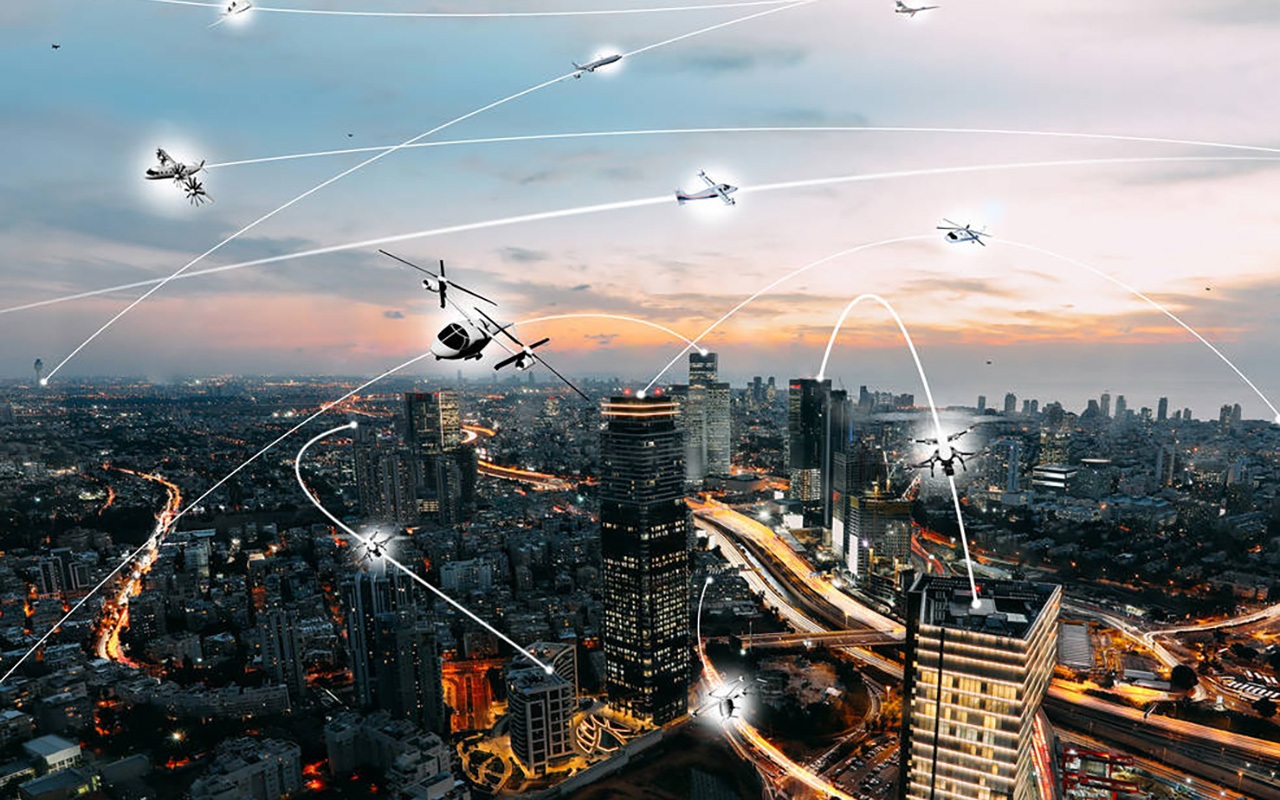Stay Up to Date
Submit your email address to receive the latest industry and Aerospace America news.
Even the experts don’t agree
A decline in investment toward small electric passenger aircraft measured by the McKinsey consulting firm in a recent report should not be viewed as evidence of mounting skepticism about the market’s viability, some experts caution.
The July 19 report, “Future air mobility funding still flows, although down from 2021,” tallied up investments made toward development of aircraft ranging from electric passenger rotorcraft to supersonic and hypersonic planes.
Funds for the “passenger eVTOL” aircraft, the electric vertical takeoff and landing aircraft that are at the heart of the advanced air mobility movement, amounted to a little over $1 billion in the first half of 2022. That was less than half the amount received by the sector in the first half of 2021, said McKinsey’s Robin Riedel, a year that brought in a total of $5 billion for eVTOLs. Funding for the overall “future air mobility” category, including eVTOLs, was off pace too. About $2.2 billion arrived in the first half of this year compared to $6.9 billion for all of 2021.
Not all the news was bad for those developing futuristic aircraft. A continued strong showing was made by sustainable aviation, as the trend toward non-fossil fuels and electrification is known. Investments in that field this year include about $12.7 million for U.K.-based Cranfield Aerospace Solutions, which aims to convert existing aircraft to run on hydrogen. California-based Surf Air Mobility, which plans to electrify existing fleets, also has raised new money this year and plans to go public this summer in a $1.4 billion merger deal.
Should eVTOL believers be worried? The downturn in funding for their designs may just be one of the lulls that are common between investment rounds, Riedel cautioned.
“In this era, we see these investors considering all of these things — electric aircraft, electrification of existing aircraft, supersonic or hypersonic flight and sustainability,” Riedel said.
“So I can tell you some of the people that invested in eVTOL last year were at the same time considering investing in sustainable aviation or drones. So it’s just a matter of timing, and they may all do another round of investment in eVTOL soon.”
To illustrate how some investors hedge their bets through variety, he noted that United Airlines last year invested in eVTOL startup Archer Aviation, supersonic airliner developer Boom Supersonic and in more conventional aviation ventures.
Other reviews about the report’s implications were less rosy. Bank of America analyst Ron Epstein told me that some eVTOL players could disappear soon. “You’ll see some shakeout in the industry, you’d probably see some consolidation and you’ll end up with fewer players, but they will still need more capital.”
Epstein said the surge in eVTOL investment last year, and the dropoff in such funding this year, can be explained partly by the economic environment.
“Money was flowing in 2021, and there was a huge risk appetite for that kind of investment in a new technology,” he said. “In the current environment, with interest rates going up and the economy on a different footing, there’s just less risk appetite, less liquidity.”
Epstein said he was impressed by the sustainability initiatives showcased at the Farnborough International Airshow in England last week by major companies like Airbus, Boeing and Embraer.
“I’m a big believer in sustainable aviation fuels, because it’s a logical path to take the existing fleet in the right direction,” Epstein said.
Among the eVTOL skeptics is Cranfield’s CEO Paul Hutton. He told me he believes the investment world has caught on to the severity of the challenges eVTOL makers are facing, particularly that powerful batteries degrade too soon if they are rapidly charged again and again.
Hutton expects to raise up to $25 million this year for his company.
After about two decades as a subcontractor to Airbus, Boeing, Raytheon and others, the company has struck out on its own initiative with the goal of building a 19-seat, zero-emissions aircraft with hydrogen propulsion.
“We know such a project is going to be very hard. So step one is Project Fresson, converting a Britten Norman Islander aircraft by transforming its propulsion system from conventional fossil fuel to that of gaseous hydrogen via a fuel cell and electric motor,” Hutton told me. “The end solution will be emissions-free air travel and is planned to be certified for passenger flight by 2025.”
Regarding eVTOL makers, “a lot of the startups make all sorts of assumptions that are just incorrect,” Hutton said. “For example, they will tell you the energy density of their batteries when the batteries are new, but a regulator only cares about the energy density of a battery on the day you retire it.”
Hutton said his company’s approach of modifying an existing aircraft also stands a better chance of being certified by regulators quickly compared to eVTOLs, which require regulators to approve entirely new airframe designs and propulsion systems.
Get the latest news about advanced air mobility delivered to your inbox every two weeks.
About paul brinkmann
Paul covers advanced air mobility, space launches and more for our website and the quarterly magazine. Paul joined us in 2022 and is based near Kennedy Space Center in Florida. He previously covered aerospace for United Press International and the Orlando Sentinel.
Related Posts
Stay Up to Date
Submit your email address to receive the latest industry and Aerospace America news.




